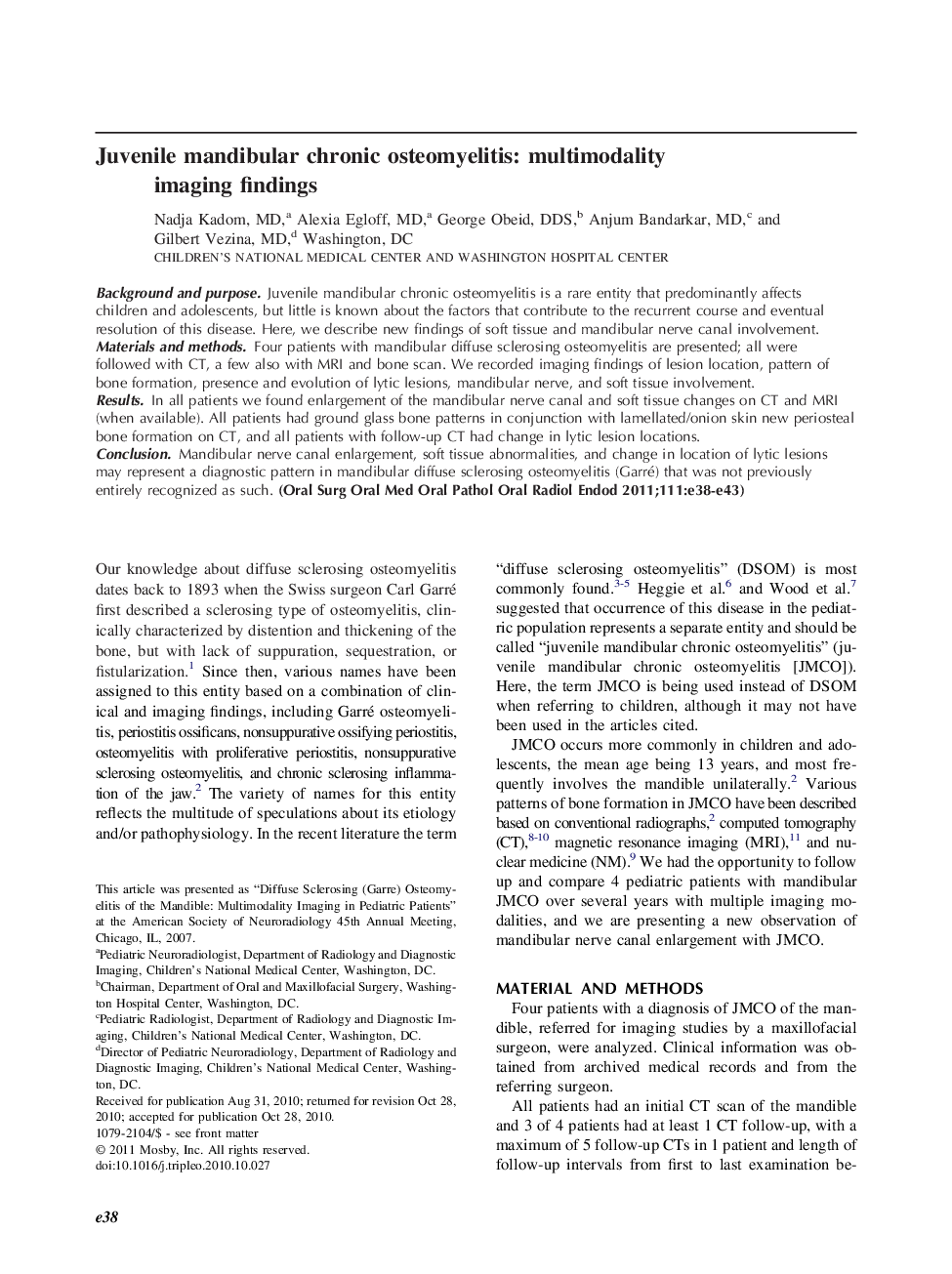| Article ID | Journal | Published Year | Pages | File Type |
|---|---|---|---|---|
| 6059949 | Oral Surgery, Oral Medicine, Oral Pathology, Oral Radiology, and Endodontology | 2011 | 6 Pages |
Background and purposeJuvenile mandibular chronic osteomyelitis is a rare entity that predominantly affects children and adolescents, but little is known about the factors that contribute to the recurrent course and eventual resolution of this disease. Here, we describe new findings of soft tissue and mandibular nerve canal involvement.Materials and methodsFour patients with mandibular diffuse sclerosing osteomyelitis are presented; all were followed with CT, a few also with MRI and bone scan. We recorded imaging findings of lesion location, pattern of bone formation, presence and evolution of lytic lesions, mandibular nerve, and soft tissue involvement.ResultsIn all patients we found enlargement of the mandibular nerve canal and soft tissue changes on CT and MRI (when available). All patients had ground glass bone patterns in conjunction with lamellated/onion skin new periosteal bone formation on CT, and all patients with follow-up CT had change in lytic lesion locations.ConclusionMandibular nerve canal enlargement, soft tissue abnormalities, and change in location of lytic lesions may represent a diagnostic pattern in mandibular diffuse sclerosing osteomyelitis (Garré) that was not previously entirely recognized as such.
